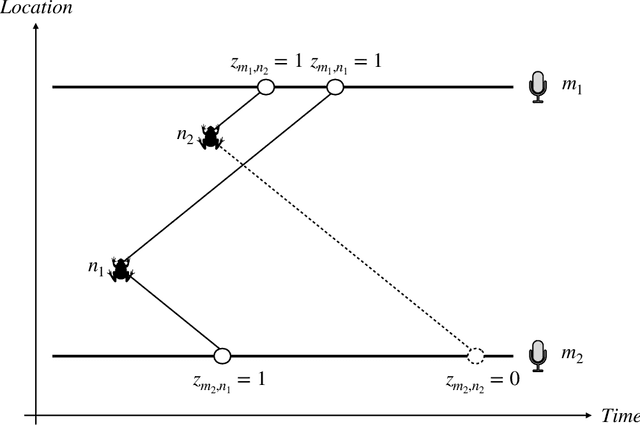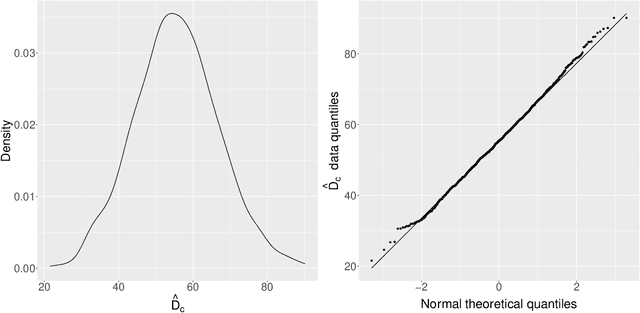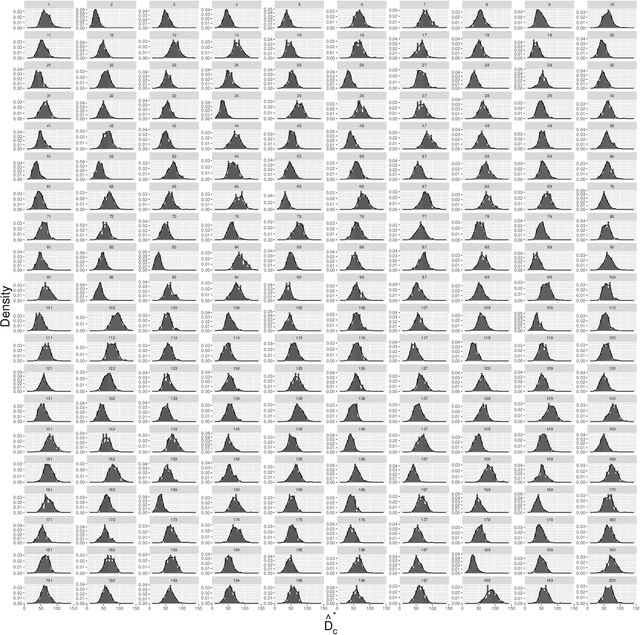David L. Borchers
Approximate Maximum Likelihood Inference for Acoustic Spatial Capture-Recapture with Unknown Identities, Using Monte Carlo Expectation Maximization
Oct 06, 2024



Abstract:Acoustic spatial capture-recapture (ASCR) surveys with an array of synchronized acoustic detectors can be an effective way of estimating animal density or call density. However, constructing the capture histories required for ASCR analysis is challenging, as recognizing which detections at different detectors are of which calls is not a trivial task. Because calls from different distances take different times to arrive at detectors, the order in which calls are detected is not necessarily the same as the order in which they are made, and without knowing which detections are of the same call, we do not know how many different calls are detected. We propose a Monte Carlo expectation-maximization (MCEM) estimation method to resolve this unknown call identity problem. To implement the MCEM method in this context, we sample the latent variables from a complete-data likelihood model in the expectation step and use a semi-complete-data likelihood or conditional likelihood in the maximization step. We use a parametric bootstrap to obtain confidence intervals. When we apply our method to a survey of moss frogs, it gives an estimate within 15% of the estimate obtained using data with call capture histories constructed by experts, and unlike this latter estimate, our confidence interval incorporates the uncertainty about call identities. Simulations show it to have a low bias (6%) and coverage probabilities close to the nominal 95% value.
Towards Automated Animal Density Estimation with Acoustic Spatial Capture-Recapture
Aug 24, 2023



Abstract:Passive acoustic monitoring can be an effective way of monitoring wildlife populations that are acoustically active but difficult to survey visually. Digital recorders allow surveyors to gather large volumes of data at low cost, but identifying target species vocalisations in these data is non-trivial. Machine learning (ML) methods are often used to do the identification. They can process large volumes of data quickly, but they do not detect all vocalisations and they do generate some false positives (vocalisations that are not from the target species). Existing wildlife abundance survey methods have been designed specifically to deal with the first of these mistakes, but current methods of dealing with false positives are not well-developed. They do not take account of features of individual vocalisations, some of which are more likely to be false positives than others. We propose three methods for acoustic spatial capture-recapture inference that integrate individual-level measures of confidence from ML vocalisation identification into the likelihood and hence integrate ML uncertainty into inference. The methods include a mixture model in which species identity is a latent variable. We test the methods by simulation and find that in a scenario based on acoustic data from Hainan gibbons, in which ignoring false positives results in 17% positive bias, our methods give negligible bias and coverage probabilities that are close to the nominal 95% level.
 Add to Chrome
Add to Chrome Add to Firefox
Add to Firefox Add to Edge
Add to Edge